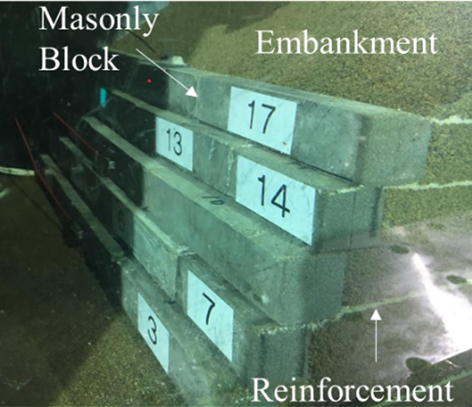Centrifugal shaking experiments and FEM analytical investigation on masonry block reinforcement of small earth dams
1
Construction Technology Research Department, Research & Development Institute, Takenaka Corporation, Japan
2
College of Agriculture, Ibaraki University, Japan
3
Institute for Rural Engineering,, NARO, Japan
4
Graduate School of Agricultural and Life Sciences, University of Tokyo, Japan
Submission date: 2023-09-07
Acceptance date: 2023-09-28
Publication date: 2024-04-02
Corresponding author
Bohan WANG
Construction Technology Research Department, Research & Development Institute, Takenaka Corporation, 5-1, 1-chome, Otsuka, 270-1395, Inzai-shi, Chiba, Japan
Construction Technology Research Department, Research & Development Institute, Takenaka Corporation, 5-1, 1-chome, Otsuka, 270-1395, Inzai-shi, Chiba, Japan
Archives of Civil Engineering 2024;70(1):443-458
KEYWORDS
small reservoircentrifugal model experimentsdynamic response analysisreinforced earthworkseismic response
TOPICS
ABSTRACT
In this research, a series of centrifuge model tests and dynamic response analyses were conducted to elucidate the impact of a composite structure comprised of a reinforced earth-pressure-resistant technique, using both masonry blocks and the reinforced earth method, which was installed at the slope toe end of an aged reservoir. The purpose of the study was to evaluate the seismic response of the embankment. The experimental tests included shaking table tests that were performed on an unreinforced embankment as well as a masonry block reinforced embankment, both in a water storage condition. The dynamic behavior of the embankment, as well as the propagation of slip failure, were compared and verified. Through the use of elasto-plastic dynamic response analysis, using the finite element method, the location of the slip surface, the settlement of the embankment and the dynamic response characteristics, as obtained experimentally, were examined to clarify the effects of the counter measure structure. The results indicate that the implementation of masonry blocks and the reinforcement installed behind them greatly improve the stability of the slope of the embankment, suppress the shear failure of the upper part of the embankment, and effectively prevent overall deformation of the embankment.
We process personal data collected when visiting the website. The function of obtaining information about users and their behavior is carried out by voluntarily entered information in forms and saving cookies in end devices. Data, including cookies, are used to provide services, improve the user experience and to analyze the traffic in accordance with the Privacy policy. Data are also collected and processed by Google Analytics tool (more).
You can change cookies settings in your browser. Restricted use of cookies in the browser configuration may affect some functionalities of the website.
You can change cookies settings in your browser. Restricted use of cookies in the browser configuration may affect some functionalities of the website.




